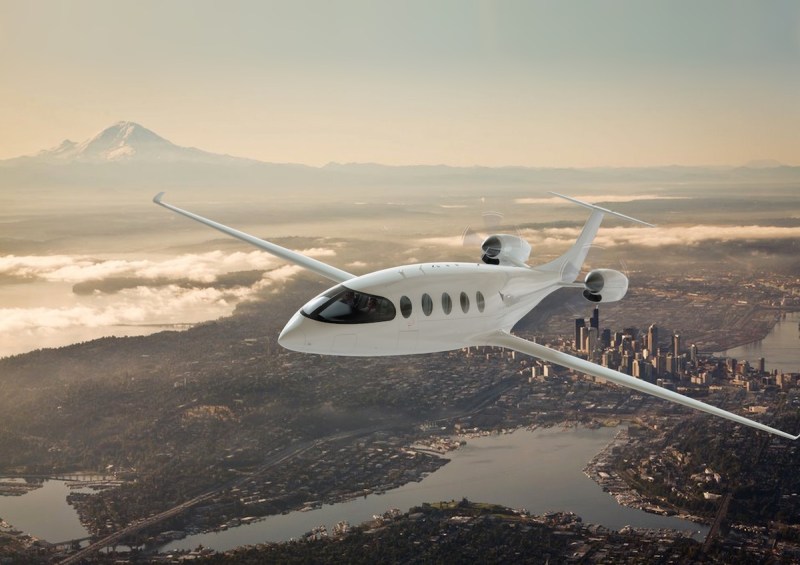On 17 December 1903, two brothers who ran a bicycle shop in the U.S. point out of North Carolina designed historical past on a remote strip of seashore around the town of Kittywake. Wilbur and Orville Wright took to the air in the very first-ever flight by a run, heavier-than-air traveling machine.
Just over 120 many years on, there’s a new challenge afoot for aviation aficionados. Air vacation is a single of the most carbon-intense forms of transport: a solitary very long-haul flight has a similar overall carbon affect to driving a gasoline-run vehicle for a 12 months.
So, as the global aviation marketplace operates to meet the UN International Civil Aviation Organisation (ICAO) focus on of internet-zero emissions by 2050, it’s also pushing speedy innovation in how planes are driven.
Very last February, we wrote that electric powered and hydrogen-powered planes have been probably continue to “decades away” from substantial-scale software. A calendar year on, entire decarbonization remains a good way off, supplied the capability and storage limitations of electrical batteries and hydrogen.
“The obstacle for batteries is to pack in more than enough power to switch jet gasoline but remain light adequate to not increase a plane’s fat as well substantially,” says Geneva-based mostly business aviation business entire body Air Transport Action Team (ATAG). “To place it in viewpoint, liquid jet fuel presently yields approximately 43 times a lot more electrical power than an equivalent mass of battery.”
Even though scores of researchers tackle this conundrum, many much more are making crucial developments on a variety of other fronts. But – spoiler alert – this will not be adequate to justify guilt-free of charge world-wide jetsetting, at the very least for an additional ten years.
Go compact or go residence
Some innovators are concentrating on tiny, small-selection, totally-electric powered models. Electric powered motor maker magniX flew an all-electric powered nine-passenger Cessna for 30 minutes in 2020, creating it the biggest electric aircraft to choose to the air at the time.
Washington-centered startup Eviation Plane is channeling its electrification efforts into commuter flights – those people underneath 400 kilometers, which manufactured up 29 % of all flights in the US in 2019, and which CEO Greg Davis suggests are “perfect” for electric planes.
In 2022, the business concluded a profitable examination flight of its 9-passenger Alice plane, which is set to enter provider close to 2027.
These improvements will be far more impactful in some contexts than other people. New Zealand’s national airline, Air New Zealand, is a big early investor – presented the country’s smaller dimension, minimal populace density, and largely-renewable electrical energy grid, substantially of Air New Zealand’s fleet previously consists of little planes flying reasonably short distances.
This tends to make it a excellent applicant for swapping out its domestic fleet with more sustainable aircraft – which the organization aims to do by 2030, although it acknowledges that “the technological innovation is not sophisticated ample for us to make a decision nevertheless all over what plane we will use.”
The enterprise has presently pre-requested up to 23 Eviation Alice plane, as properly as a light electric powered cargo plane from U.S. agency Beta Systems that will be deployed for mail shipping around the state from 2026, carrying up to 560 kilograms of mail.
Nevertheless, Air New Zealand CEO Greg Foran explained to The Guardian that it will be trickier to decarbonize its much larger planes, especially these made use of for extensive-haul international flights. It will likely count on the improvement and expanded availability of sustainable aviation fuel (SAF), which can reduce emissions by up to 80 per cent.
Regrettably, the uptake of these fuels has been constrained to date by higher creation costs and limited source: they comprise just .1 per cent of all jet gas at the moment becoming utilized.

Hybrid hopes
Other innovators are betting on hybrid-electric technological know-how for scalability. The 6-seat hybrid-electrical EcoPulse successfully performed its to start with exam flight in December 2023. Swedish firm Coronary heart Aerospace is acquiring a 30-seat aircraft that can fly completely electric powered for about 200 kilometers, then switch to SAF for distances of up to 800 kilometers. The 80-seat Maeve M-80, planned for 2031, aims to consider these ambitions a move even further.
Combining hydrogen and electrical technological know-how also retains guarantee. U.K. corporation ZeroAvia first flew the world’s biggest hydrogen-electrical aircraft, a 19-seater, very last January. Aerospace large Airbus is obtaining in on the act, much too, by building three hybrid-hydrogen and one electrical plane, which it aims to convey to current market by 2035.
To use hydrogen effectively and safely and securely, the industry will want to perform out how to produce, transport and retail outlet it, as perfectly as establish specific infrastructure to cope with the gasoline at airports.
Lighter than air
French company Euro Airship is heading further more ‘outside the box’ by kicking off this calendar year with the construction of an electrical, photo voltaic- and hydrogen-run airship, Solar Airship Just one, that it strategies to fly around the planet non-end in 2026. If they be successful, this will be the very first aircraft to make the trip devoid of working with fossil fuels.
Getting lighter than air, airships do not require practically as much propulsion as other craft. A photo voltaic film on the ship’s higher surface will assemble electric power, with the surplus currently being stored in gasoline cells and converted to hydrogen to maintain the ship likely. With its renewable power method, the ship must theoretically be able to remain aloft indefinitely.
“Throughout background, all great goals have been regarded impossible prior to they were accomplished,” suggests the progress crew on the project’s internet site. “Today, the experience should proceed by knowing a great epic in the provider of environmental protection and renewable energies, intended to make enthusiasm all around the local weather issues of the 21st century.”
Thrilling instances, for guaranteed. Again down here on Earth, however, there is even now a extended way to go prior to sustainable aviation results in being possible on a substantial scale.
That actuality check only reiterates what many have been saying for several years: that the only way to decarbonize aviation promptly sufficient to avert climate disaster is to fly much less.



